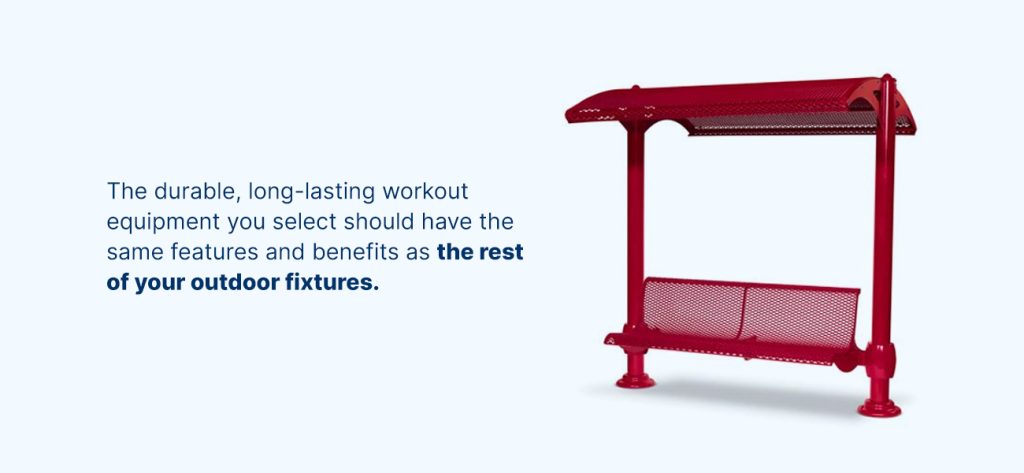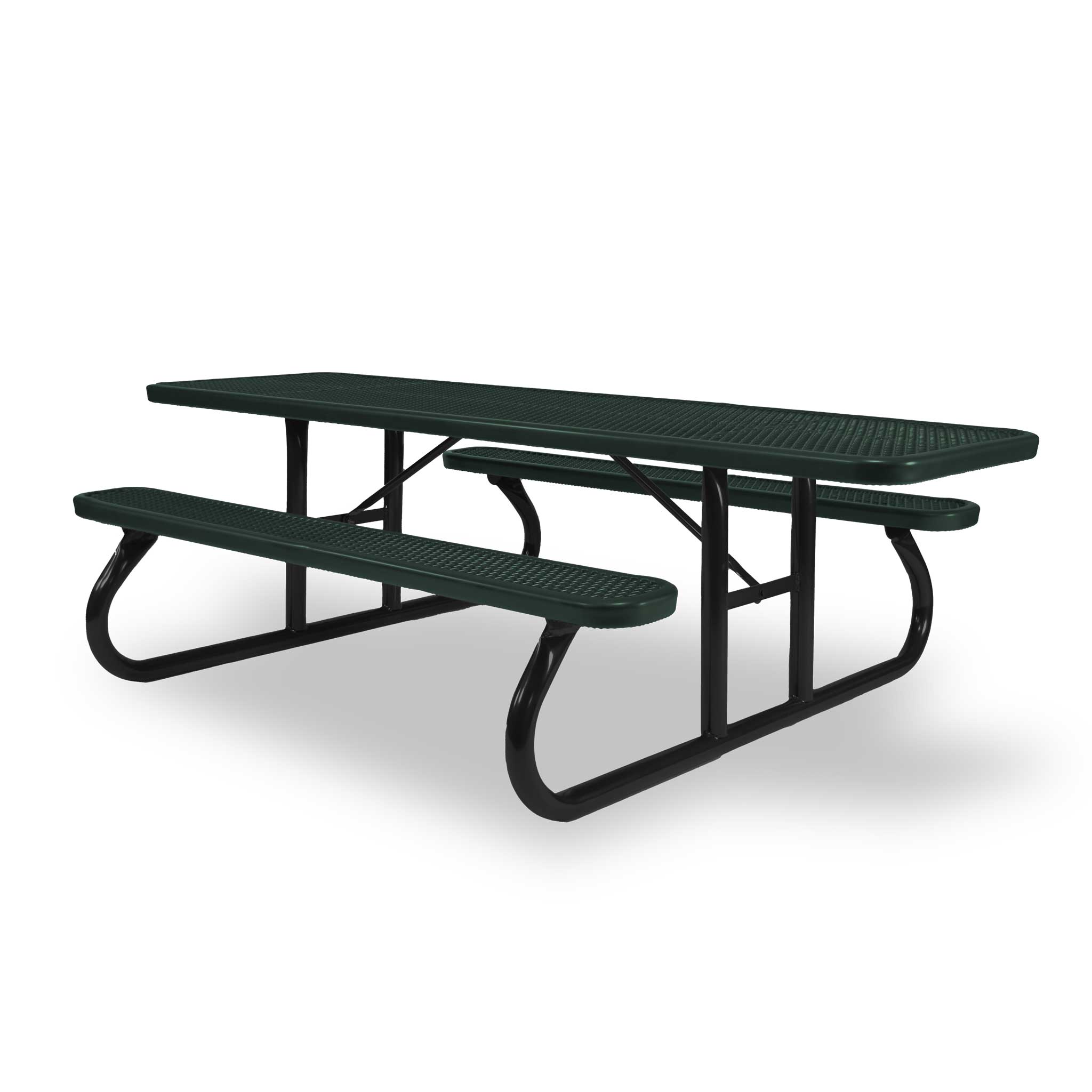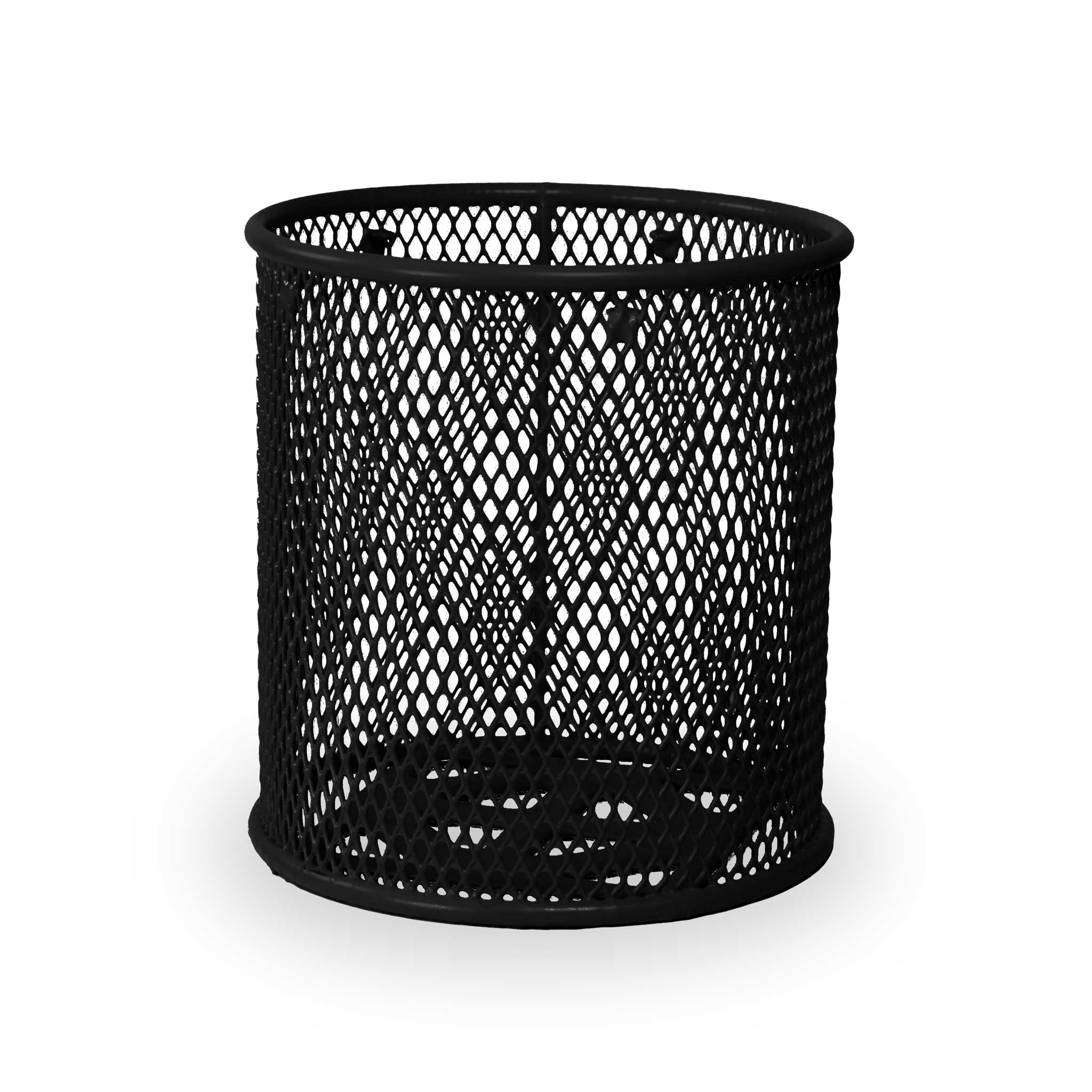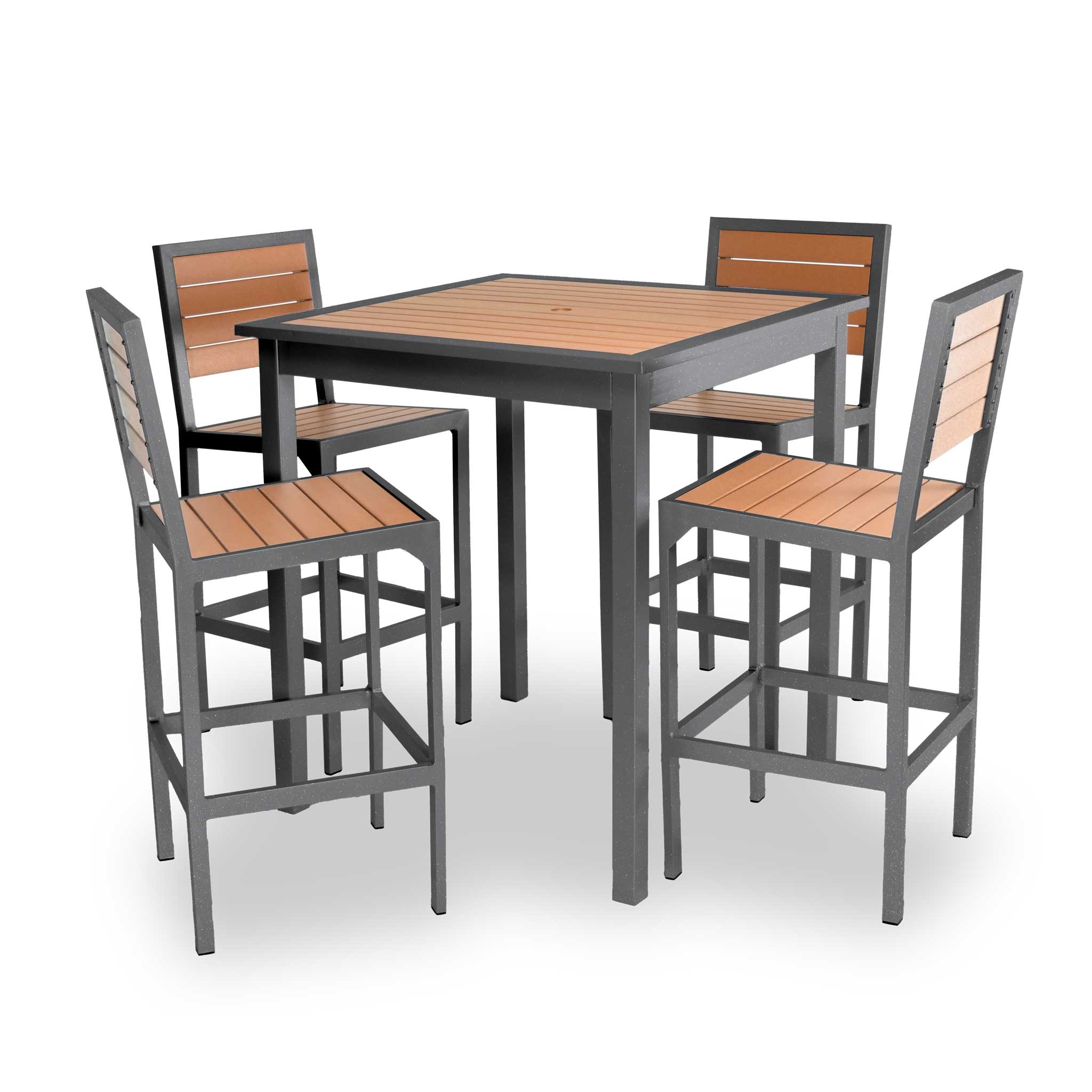How to Design an Outdoor Gym

Design Guide | Dec 17, 2021
Make the most of your outdoor gym by ensuring that you have everything you need for its success before you break ground on the project. With careful planning and design, you can have a popular outdoor spot for fitness enthusiasts who want an alternative to indoor gyms. Plus, with a properly located gym, you can draw people from nearby exercise trails to take advantage of your site’s amenities and add strength training to their routine.

What Is an Outdoor Gym?
If you’re designing an outdoor gym, you understand the value of this recreation site’s presence in a community. Many local governments pay for public outdoor fitness sites to encourage better health in their residents. Neighborhood or apartment complex owners may do the same to entice residents who value personal fitness and want access to a gym within walking distance from their homes.
Outdoor gyms contain many pieces of non-electric equipment that individuals can use for cardiovascular exercise or strength training. However, since these sites are outside, they may also have additional amenities to make the area more comfortable for users between exercises. For instance, you may see extra rest benches or tables around an outdoor gym for taking a break between exercises or while waiting for equipment that others are using.
Another difference between indoor and outdoor gyms is the inclusion of changing rooms and showers. The former usually have these while the latter often don’t. However, outdoor fitness spaces are generally located near people’s homes so they can return home to clean up after using the fresh-air gym. Showers and restrooms for the site may be found in a building nearby, especially if the site also has a pool or a similar amenity.
An on-site changing room is unnecessary for some locations, but it is also a valuable addition for convenience. If your pool or outdoor gym sees public use, these amenities can be indispensable.
Whether a workout station is intended for public use, pass holders or a neighborhood’s residents, making it clear that the outdoor gym is not a playground is essential. These sites have equipment designed for adult use only and may be unsafe for unsupervised children. Children should not be allowed on the equipment. Therefore, if you’re building an outdoor gym in your area, avoid placing it too close to the playground.
You can also create a barrier between the two environments to protect kids from accessing the outdoor gym equipment.
Think of an outdoor gym as a place for adults to get extra strength or cardio training into their day in a park-like setting.

Why Build an Outdoor Gym?
Why should you consider an outdoor gym for your park or recreation area? These alternatives to indoor workouts offer several benefits for you and those who use outdoor equipment. In fact, there are many benefits of adding an outdoor gym to your community. For example, it could contribute to healthier and happier residents.
Provide People With Fresh Air While They Workout
Outdoor gyms offer people the chance to get outside and breathe fresh air during their workouts. The Centers for Disease Control and Prevention notes that spending time outdoors can promote improved mental and physical health. Plus, spending time in sunlight prompts the body to produce vitamin D, and people who spend too much time indoors may have a deficiency in this essential micronutrient.
Encouraging people to come outside for their workouts gives them a different setting than a traditional gym with the added benefits of extra sunlight and fresh air.
Offer Convenience for Individuals in the Area
For people who live or work in the area, an outdoor gym located in a park nearby provides them with a place to get a quick workout in. With a convenient location for workout equipment, people in the area have a greater chance of using it to increase their fitness.
Plus, when placed in a public park, an outdoor gym offers a free alternative to those who may not have the funds to sign up for a gym membership. With outdoor gyms, locals can get a workout at any time without contracts, fees or other financial strains incurred by traditional gyms.
Create a Draw for New Residents or Park Users
Once, a neighborhood only needed a swimming pool or tennis courts to bring in residents. However, today’s renters and homebuyers are more varied in their tastes. If you want to bring more people to your area, adding an outdoor gym can create a draw for them. Often, they want to have access to places that support their hobbies near their homes. An outdoor gym offers them a place to work out right where they live.
For instance, when establishing a new neighborhood or apartment complex, having an outdoor gym adds an amenity not found in many neighborhoods. Such a unique feature can set your community apart from others, making it more enticing for people looking for a place to live in the area.
Increase Use of Local Running Trails
Are local running trails seeing less traffic than expected? Consider adding an outdoor gym to provide supplemental workout options to people along the trail.
By placing an outdoor gym along a jogging trail, you give people a convenient place to complete strength training and cardiovascular jogging in the same location. The presence of the gym encourages people who may not otherwise use or notice the jogging trail to frequent both amenities. Plus, putting a place to walk, jog, run, hike or bike near a workout station that supports weight lifting or other activities makes it more convenient for users to round out their workouts in the same location.
10 Things to Consider When Planning an Outdoor Gym
An outdoor gym combines the attributes of parks and indoor gyms. Still, an outdoor workout space requires planning methods and considerations all its own. Evaluate the following aspects of the outdoor gym when designing a site furnished with outdoor exercise equipment:

1. Budgeting
A budget is one of the most important aspects of the project. It will determine the size and amount of equipment you can fit into an outdoor gym. Public funds or donations may contribute to the budget for public outdoor gyms. If you are building a workout facility outside for a private neighborhood, fees from residents may cover the cost.
For both public and private construction projects, you may need to petition those in charge of finances for approval to add the gym to the budget. Consider local government infrastructure and whether the outdoor gym will be part of an existing park or a new venue.
In existing neighborhoods, you may need approval from a neighborhood association or board before proceeding with the outdoor gym. When constructing a new neighborhood that includes an outdoor gym, budgeting for the gym may need to go into the overall construction budget.
However you get approval for the project, ensure you have an accurate budget for building the gym space because you will need to use those funds for the site planning, equipment and installation processes.
2. Location
The location of your outdoor workout space is essential for attracting people to use it. Therefore, plan the site with extreme care. The ideal placement is a location that draws people’s attention and is convenient for those who want to use it.
For public parks, set up the outdoor gym near other workout options, such as running or biking trails. Make sure to have adequate parking nearby for those who drive to the park instead of walking.
In neighborhoods, consider a central location to make accessing the gym convenient for all residents. Also, place it with enough distance from homes or apartments to keep those living nearby from hearing the sounds of people using the equipment. However, since many of the workout options for these gyms use body weight instead of added weights, they are much quieter than regular gyms.

3. Site Planning
The site you choose for the gym needs to have good drainage and enough shade to keep the area comfortable in the summer.
You may need to add fill dirt to sites with low spots to prevent water ponding, which may present a safety hazard. Generally, the site needs to slope downward in all directions to allow rainwater to flow away from the workout equipment.
If there are trees nearby, you may need to remove some to install the equipment. Still, the space will benefit from leaving some trees to provide natural shade during the hottest months of the year. Make sure to protect the bases of any remaining trees with tree grates. These small fencing structures wrap around tree trunks to protect gym users from accidentally running into trees as they move between workout stations and keep the trees from impact.
To keep the site cool during the summer, place commercial umbrellas or other shade covers around to provide shade if there are no trees in the area. These structures will also protect the equipment from the elements, such as UV rays.
4. Safety
Safety is vital to those who use the site’s outdoor exercise equipment. Plus, the structure should discourage vandalism and protect the equipment. Consider installing fencing around the gym that ensures access only during the station’s open hours or to those who have a key or code.
An additional safety feature to consider, especially if the property owners will allow people to use the gym after dark, is lighting. Floodlights can enable extended use of the gym after dark or on overcast days. Plus, the extra light provides security for those at the site by reducing shadows where dangers may otherwise go unseen.

5. Target Users
Identify the outdoor fitness site’s target audience. If your park already has a jogging trail, you may not need to include as many pieces of cardio equipment in the gym because visitors can use the nearby course.
If the outdoor gym is for an apartment complex that targets young, single people, you may want to allow space for instructors to host workout classes to encourage socializing with fitness.
6. Accessibility
Your outdoor workout station must be accessible according to the Americans with Disabilities Act (ADA). Ensure there are reserved, accessible parking spots outside the gym and that all walkways and ground surfaces are suitable for people who use mobility devices.
7. Equipment to Install
Choose the right equipment to install for your outdoor facility. Consider your budget and look for durable outdoor fitness pieces designed to stand up to UV, snow and rain exposure. Think about the amount of space you have and the size of each workout station. Remember that each station must have room on all sides to allow an individual to use it safely without overlapping another station.
Additionally, ensure you include signage with pictures illustrating how to use each piece of equipment safely. Picture-based instructions overcome language barriers when conveying instructions for the correct use of parts of the gym, and you can also include text in various languages.

8. Park Essentials and Comfort Accessories
Consider the attributes you look for when choosing park accessories. The durable, long-lasting workout equipment you select should have the same features and benefits as the rest of your outdoor fixtures.
Though people will go to the outdoor workout area for exercise, they will also need places to sit and rest. A covered bench provides a shady spot to sit between workout stations. However, you can also select an uncovered bench, a bench with a back and use a commercial umbrella nearby to provide shade.
Make sure you install trash receptacles around the gym. These dedicated bins will help guests and staff keep the area clean by providing a place to toss empty water bottles or protein bar wrappers. You can also choose to install separate recycling bins to encourage recycling among gym users.
If the gym is near a parking area or bike trail, install bike racks to ensure that users have a safe, secure place to lock up their bicycles while using the gym. This rack will also prevent people from bringing their bikes inside the workout area and getting in the way of other gym users.
Lastly, install hand sanitizer stations around the gym to help prevent the spread of germs as people move between workout stations. These areas let people kill germs on their hands after touching equipment others use, further promoting health at your outdoor gym.

9. Surfacing
The ground in the fitness space needs to be an accessible, shock-absorbing surface. Some popular options include rubber surfacing and loose-fill surface material. The specific type of surfacing you choose will depend on your budget and the types of equipment you install.
10. Promotion
After completing your outdoor gym, you need to inform the public of the opening. Start your promotion with a grand opening celebration to encourage people to see the equipment and test it out. You can also have fitness instructors on-site to demonstrate the use of the equipment.
Promoting the gym should go beyond opening day. If the site is part of a neighborhood, make sure to announce it to residents and place signs in common areas about the new structure. For public parks, update websites and use flyers and announcements to create a consistent campaign for the outdoor gym.
Promoting the site will ensure that the investment will see returns in higher numbers of patrons.

7 Types of Outdoor Exercise Equipment to Include in Outdoor Gyms
When choosing equipment for your outdoor gym, consider arranging workout stations to target related muscle groups. This type of arrangement can help your patrons find the equipment they need faster. For instance, if someone wants to work out their arms at the outdoor gym, they should find all the equipment in the same area.
A personal fitness plan needs to address multiple parts of the body, and so does your outdoor gym. To ensure that every visitor has a workout option for their fitness goals, make sure that you include workout stations for all the main groups of the body, including cardio equipment to work the heart and balance and agility gear to improve dexterity. Other recommendations include:
1. Back and Shoulders Workout Equipment
Your space can encourage working out the back and shoulders without expensive free weights. Instead, consider pullup bars, chin-up bars or lat pulldown equipment. These options provide work for the shoulders, arms and back. Pullups and chin-ups require the individual to lift their body weight from the ground. Lat pulldowns use a resistance bar to increase force when pulling down on it.
2. Chest Workout Equipment
Provide chest workout equipment with chest press stations and pushup stations.
Chest press devices work the chest muscles by requiring the user to push against a bar. A similar action occurs during pushups. Pushup stations use one or more bars mounted on the ground to provide varying difficulty levels for pushups. Higher bars are better for beginners because they only require the user to push against a portion of their body weight. Lower bars increase the percentage of body weight the person must push against, thus increasing the challenge.
3. Cardio Fitness Equipment
Not all gyms focus on strength training. Cardio equipment is vital to include if your gym does not have a nearby jogging trail or swimming pool. Options for cardio equipment include recumbent stationary bikes, cardio walkers and ellipticals. Handcycles are another accessible option for building cardiovascular ability and upper body strength.
4. Balance Improvement Equipment
Balance is crucial for health at any age. Whether you expect the outdoor gym to see more 20-somethings, seniors or people in between, include balance equipment to maintain and strengthen their skills. Balance boards often have a spring under them to challenge the user to stay upright while standing on them, and beams and planks offer narrower surfaces to train balance while walking.
5. Abdominal and Core Workout Stations
The core muscles help to maintain posture and keep the body upright. Consequently, equipment that works the abdominals can be some of the most popular in your gym. Sit-up stations give users a place to practice these exercises without lying on the ground. The captain’s chair and knee lift to work the hard-to-exercise lower portion of the core that pulls up the legs. A T-bar encourages a person to maintain the correct form for plank exercises, which requires them to hold their body straight.
6. Arm Workout Gear
While many arm workout equipment pieces also work the chest or back, bench dips focus on the arms, specifically the triceps. These exercises encourage the development of strength in the muscles at the backs of the arms.
7. Agility Stations
Agility is just as essential as balance. Some equipment that focuses on this skill includes hurdles, high jumps, parallel bars, vault bars, log hops, step-ups and plyometric boxes. These workouts require the individual to hop back and forth over obstacles or on top of boxes. They are ideal for those training to do parkour or obstacle courses, but these workout solutions also help those who want to improve their agility overall.

Contact Wabash Valley Site Furnishings for Your Outdoor Gym Components and More
The outdoor furnishings and site amenities at your gym are just as critical to the success of the space as the type of equipment you choose. To get quality, durable site furnishings that can stand up to regular use with minimal maintenance, contact Wabash Valley Site Furnishings. Our team can help you turn your outdoor gym idea into reality by helping you find the right types of outdoor furniture to create a welcoming, comfortable outdoor gym design that will draw people to it for fresh-air workouts.
Categories
Recent Posts
Sign up for our newsletter
Share this post:




